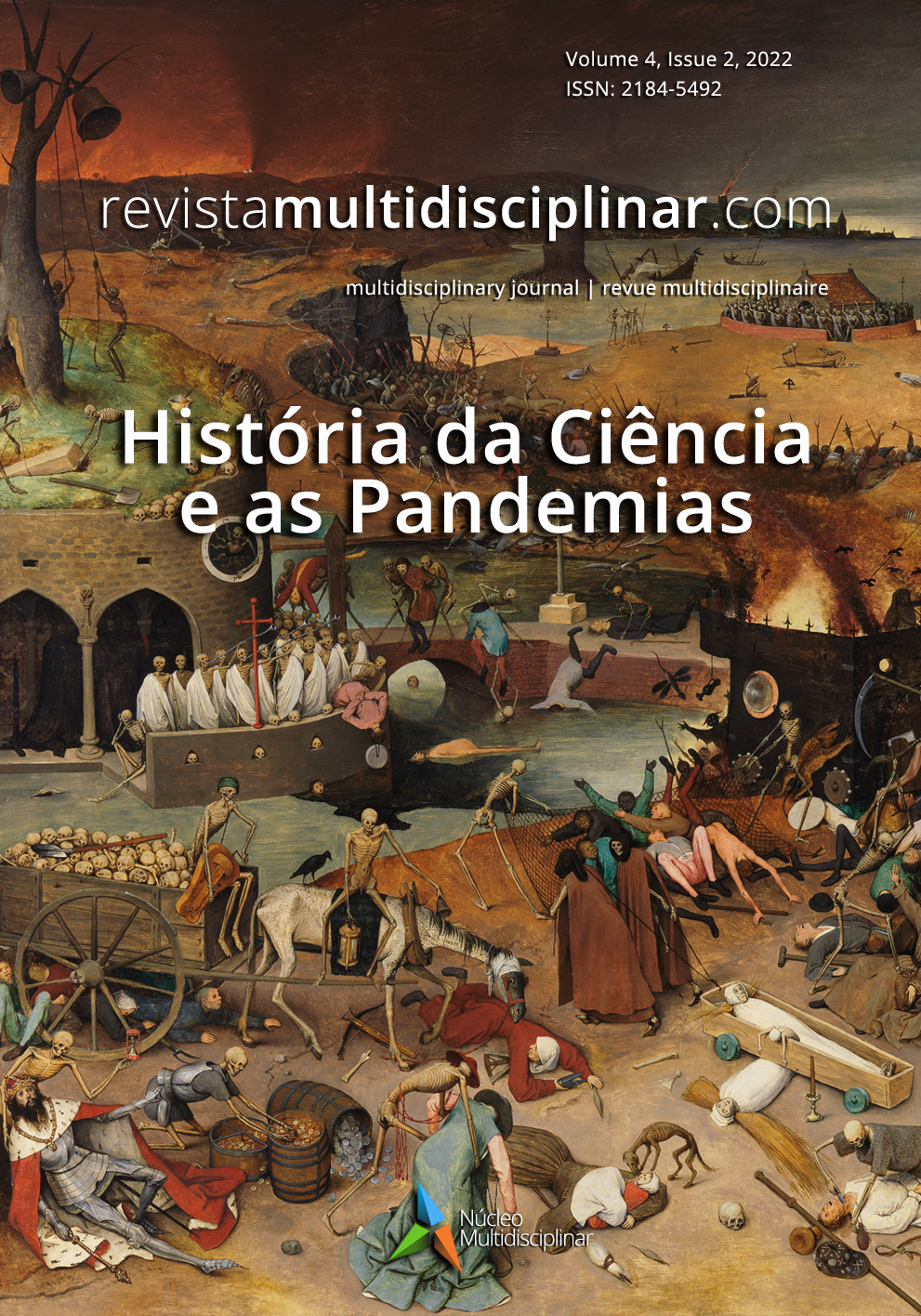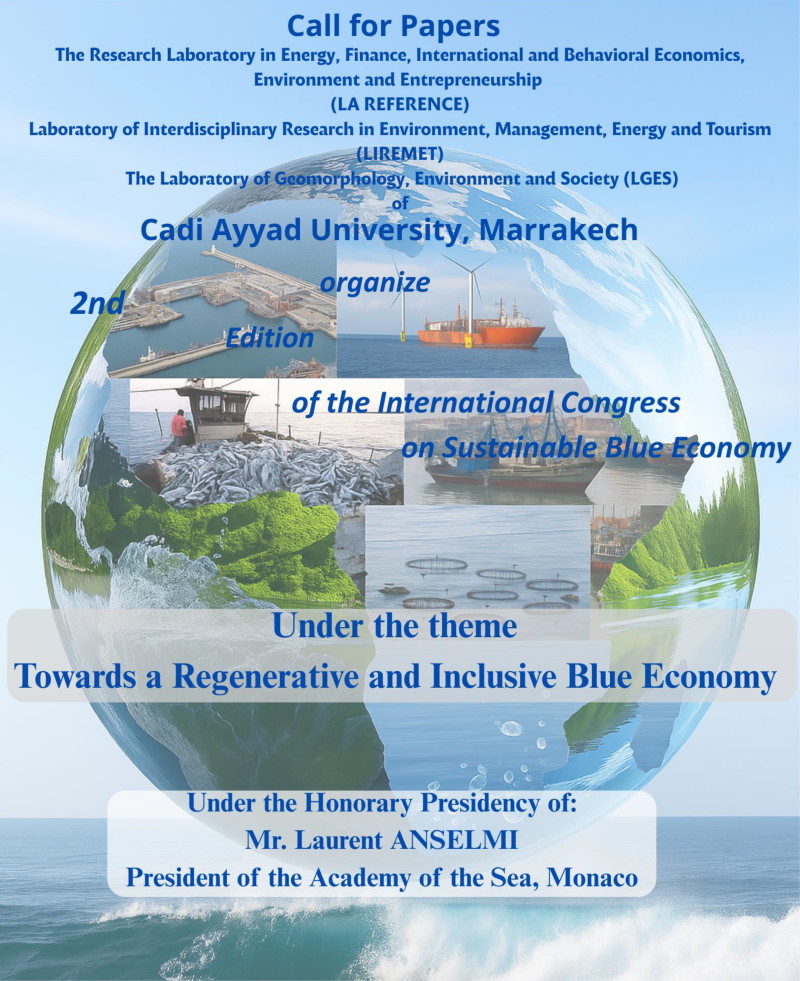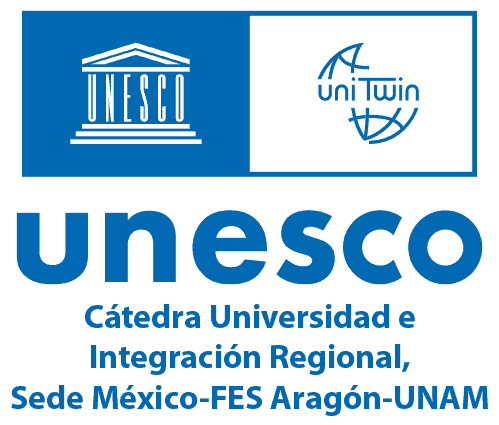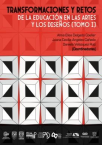O pandemónio da Gripe Espanhola
e as lições sobre o conhecimento científico de prevenção de pandemias
DOI:
https://doi.org/10.23882/rmd.22088Palavras-chave:
Gripe Espanhola, Lições, Conhecimento científico, Saúde PúblicaResumo
A Gripe Espanhola, também chamada Pneumónica, foi uma pandemia causada pelo subtipo H1N1 de influenza, que surgiu em 1918, no último ano da I Guerra Mundial. O vírus afetava os pulmões e as vias respiratórias, provocava hemorragia pulmonar e infeção bacteriana secundária. Não se sabe a origem, mas ficou conhecida como Gripe Espanhola, já que os jornais espanhóis reportaram amplamente os efeitos do vírus no país, pois Espanha assumiu uma posição neutra na guerra, não sendo praticada a censura na imprensa. A pandemia disseminou-se por várias partes do mundo e teve três ondas, sendo que a segunda, no outono de 1918, foi responsável por elevadas taxas de morbilidade e mortalidade. No geral resultou em cerca de 500 milhões de infetados por todo o mundo e, em mais de 50 milhões de mortes. Distinguiu-se pela elevada mortalidade em jovens adultos. Portugal foi um país muito afetado. A Gripe Espanhola chegou ao país através do Alentejo, durante os meses de junho e julho de 1918.
Pretendemos, com o presente artigo, refletir sobre como a partir da pandemia de 1918-1919 desenvolveu-se o conhecimento científico na área da saúde pública e como os avanços científicos subsequentes facilitaram o desenvolvimento de medidas preventivas, incluindo vacinas e antivirais. Muitas lições da pandemia de Gripe Espanhola foram aprendidas e contribuíram para a história da ciência na prevenção de outras potenciais pandemias e epidemias que decorreram ou foram prevenidas no século XX e início do século XXI incluindo a pandemia da Covid-19.
Referências
Barberis, I., Myles, P., Ault, S. K., Bragazzi, N. L., & Martini, M. (2016). History and evolution of influenza control through vaccination: from the first monovalent vaccine to universal vaccines. Journal of Preventive Medicine and Hygiene, 57(3), E115–E120.
Bazin, H. (2011). Vaccination: From Lady Montagu to Jenner Pasteur and Genetic Engineering. John Libbey Eurotext Ltd; UK ed.
Bootsma, M. C., & Ferguson, N. M. (2007). The effect of public health measures on the 1918 influenza pandemic in U.S. cities. Proceedings of the National Academy of Sciences of the United States of America, 104(18), 7588–7593. https://doi.org/10.1073/pnas.0611071104
Brundage, J. F., & Shanks, G. D. (2008). Deaths from bacterial pneumonia during 1918-19 influenza pandemic. Emerging Infectious Diseases, 14(8), 1193–1199. https://doi.org/10.3201/eid1408.071313
Brundage, J. F. (2006). Interactions between influenza and bacterial respiratory pathogens: implications for pandemic preparedness. The Lancet. Infectious Diseases, 6(5), 303–312. https://doi.org/10.1016/S1473-3099(06)70466-2
Byerly CR. Fever of War. The Influenza Epidemic in the U.S. Army during World War I. New York, NY: New York University Press; 2005.
Coltart, C. E. M., Lindsey, B., Ghinai, I., Johnson, A. M., & Heymann, D. L. (2017). The Ebola outbreak, 2013–2016: Old lessons for new epidemics. Philosophical Transactions of the Royal Society B: Biological Sciences, 372(1721), 2013–2016. https://doi.org/10.1098/rstb.2016.0297
Crosby A. W. (1976). Epidemic and Peace 1918. Santa Barbara, CA: Abc-Clio.
Erkoreka, A. (2009). Origins of the Spanish Influenza pandemic (1918-1920) and its relation to the First World War. Journal of Molecular and Genetic Medicine: An International Journal of Biomedical Research, 3(2), 190–194. https://www.ncbi.nlm.nih.gov/pmc/articles/PMC2805838/
Erkoreka, A. (2010). The Spanish influenza pandemic in occidental Europe (1918-1920) and victim age. Influenza and Other Respiratory Viruses, 4(2), 81–89. https://doi.org/10.1111/j.1750-2659.2009.00125.x
Esteves, A. P., & Pinto, S. (2020). A gripe espanhola em Portugal: a construção da memória. O trabalho médico e a assistência hospitalar. Mundos do Trabalho, 12, 1-15. https://doi.org/10.5007/1984.9222.2020.e75134
Fauci, A. S., & Morens, D. M. (2012). The Perpetual Challenge of Infectious Diseases. New England Journal of Medicine, 366(5), 454–461. https://doi.org/10.1056/nejmra1108296
Ferrari, L. (2020). Spanish flu in Turin as told by historical autopsy reports. Pathologica, 112(2), 110–114. https://doi.org/10.32074/1591-951X-2-20
Fineberg, H. V. (2014). Pandemic Preparedness and Response — Lessons from the H1N1 Influenza of 2009. New England Journal of Medicine, 370(14), 1335–1342. https://doi.org/10.1056/nejmra1208802
Fornasin, A., Breschi, M., & Manfredini, M. (2018). Spanish flu in Italy: new data, new questions. Le Infezioni in Medicina 26(1), 97-106.
Frost, W. H. (1919). Public health weekly reports for August 15, 1919. Public Health Reports, 34, 1823–1926. https://doi.org/10.2307/4575271
Gagnon, A., Miller, M. S., Hallman, S. A., Bourbeau, R., Herring, D. A., Earn, D. J., & Madrenas, J. (2013). Age-specific mortality during the 1918 influenza pandemic: unravelling the mystery of high young adult mortality. PloS one, 8(8), e69586. https://doi.org/10.1371/journal.pone.0069586
Gras, S., Kedzierski, L., Valkenburg, S. A., Laurie, K., Liu, Y. C., Denholm, J. T., Richards, M. J., Rimmelzwaan, G. F., Kelso, A., Doherty, P. C., Turner, S. J., Rossjohn, J., & Kedzierska, K. (2010). Cross-reactive CD8+ T-cell immunity between the pandemic H1N1-2009 and H1N1-1918 influenza A viruses. Proceedings of the National Academy of Sciences of the United States of America, 107(28), 12599–12604. https://doi.org/10.1073/pnas.1007270107
Hatchett, R. J., Mecher, C. E., & Lipsitch, M. (2007). Public health interventions and epidemic intensity during the 1918 influenza pandemic. Proceedings of the National Academy of Sciences of the United States of America, 104(18), 7582–7587. https://doi.org/10.1073/pnas.0610941104
Johnson, N. (2006). Britain and the 1918-19 Influenza Pandemic: A Dark Epilogue. Abingdon: Taylor & Francis Ltd.
Jones, K. E., Patel, N. G., Levy, M. A., Storeygard, A., Balk, D., Gittleman, J. L., & Daszak, P. (2008). Global trends in emerging infectious diseases. Nature, 451(7181), 990–993. https://doi.org/10.1038/nature06536
Jorge, R. (1918). A influenza. Nova incursão peninsular. Relatório apresentado ao Conselho Superior de Higiene na sessão de 18 de junho de 1918. Lisboa: Imprensa Nacional, 1918.
Krammer, F., Smith, G., Fouchier, R., Peiris, M., Kedzierska, K., Doherty, P. C., Palese, P., Shaw, M. L., Treanor, J., Webster, R. G., & García-Sastre, A. (2018). Influenza. Nature reviews. Disease primers, 4(1), 3. https://doi.org/10.1038/s41572-018-0002-y
Martini, M., Gazzaniga, V., Bragazzi, N. L., & Barberis, I. (2019). The Spanish Influenza Pandemic: a lesson from history 100 years after 1918. Journal of Preventive Medicine and Hygiene, 60(1), E64–E67. https://doi.org/gktfw8
Matta, S., Arora, V. K., & Chopra, K. K. (2020). Lessons to be learnt from 100 year old 1918 influenza pandemic viz a viz 2019 corona pandemic with an eye on NTEP. The Indian Journal of Tuberculosis, 67(4S), S132–S138. https://doi.org/10.1016/j.ijtb.2020.09.032
McArthur, D. B. (2019). Emerging Infectious Diseases. The Nursing Clinics of North America, 54(2), 297–311. https://doi.org/10.1016/j.cnur.2019.02.006
Morens, D.M., & Fauci, A. S. (2007). The 1918 influenza pandemic: insights for the 21st century. The Journal of Infectious Diseases, 195(7), 1018-1028. https://doi.org/10.1086/511989
Morens, D. M., & Fauci, A. S. (2013). Emerging Infectious Diseases: Threats to Human Health and Global Stability. PLoS Pathogens, 9(7), 7–10. https://doi.org/10.1371/journal.ppat.1003467
Morens, D. M., Taubenberger, J. K., & Fauci, A. S. (2008). Predominant role of bacterial pneumonia as a cause of death in pandemic influenza: implications for pandemic influenza preparedness. The Journal of Infectious Diseases, 198(7), 962–970. https://doi.org/10.1086/591708
Morens, D. M., Taubenberger, J. K., Harvey, H. A., & Memoli, M. J. (2010). The 1918 influenza pandemic: lessons for 2009 and the future. Critical Care Medicine, 38(4 Suppl), e10–e20. https://doi.org/10.1097/CCM.0b013e3181ceb25b
Mujica, G., Sternberg, Z., Solis, J., Wand, T., Carrasco, P., Henao-Martínez, A. F., & Franco-Paredes, C. (2020). Defusing COVID-19: Lessons Learned from a Century of Pandemics. Tropical Medicine and Infectious Disease, 5(4), 182. https://doi.org/10.3390/tropicalmed5040182
Murray, M. J. (2015). Ebola Virus Disease: A Review of Its Past and Present. Anesthesia and Analgesia, 121(3), 798–809. https://doi.org/f7p5t6
Nelson, M. I., Viboud, C., Simonsen, L., Bennett, R. T., Griesemer, S. B., St George, K., Taylor, J., Spiro, D. J., Sengamalay, N. A., Ghedin, E., Taubenberger, J. K., & Holmes, E. C. (2008). Multiple reassortment events in the evolutionary history of H1N1 influenza A virus since 1918. PLoS Pathogens, 4(2), e1000012. https://doi.org/10.1371/journal.ppat.1000012
Nickol, M.E., & Kindrachuk, J. (2019). A year of terror and a century of reflection: perspectives on the great influenza pandemic of 1918–1919. BMC Infectious Diseases, 19, 117. https://doi.org/10.1186/s12879-019-3750-8
Opie, E. L., Blake, F. G., Small, J. C., & Rivers, T. M. (1921). Epidemic respiratory disease: the pneumonias and other infections of the respiratory tract accompanying influenza and measles. St. Louis: CV Mosby; 1921
Oswald, N. C., Shooter, R., Curwen, M. (1958). Pneumonia complicating Asian influenza. BMJ, 2,1305.
Ott, M., Shaw, S. F., Danila, R. N., & Lynfield, R. (2007). Lessons learned from the 1918-1919 influenza pandemic in Minneapolis and St. Paul, Minnesota. Public Health Reports (Washington, D.C.: 1974), 122(6), 803–810. https://doi.org/10.1177/003335490712200612
Paynter, S., Ware, R. S., Shanks, G. D. (2011). Host and environmental factors reducing mortality during the 1918-1919 influenza pandemic. Epidemiology and Infection, 139,1425e30.
Pearce, M. B., Belser, J. A., Gustin, K. M., Pappas, C., Houser, K. V., Sun, X., Maines, T. R., Pantin-Jackwood, M. J., Katz, J. M., & Tumpey, T. M. (2012). Seasonal trivalent inactivated influenza vaccine protects against 1918 Spanish influenza virus infection in ferrets. Journal of Virology, 86(13), 7118–7125. https://doi.org/10.1128/JVI.00674-12
Radusin, M. (2012a). The Spanish flu-Part I: the first wave. Vojnosanitetski Pregled, 69(9), 812-817.
Radusin M. (2012b). The Spanish flu--part II: the second and third wave. Vojnosanitetski Pregled, 69(10), 917-927.
Raoult, D., Mouffok, N., Bitam, I., Piarroux, R., & Drancourt, M. (2013). Plague: History and contemporary analysis. Journal of Infection, 66(1), 18–26. https://doi.org/10.1016/j.jinf.2012.09.010
Reid, A. H., Fanning, T. G., Hultin, J. V., & Taubenberger, J. K. (1999). Origin and evolution of the 1918 "Spanish" influenza virus hemagglutinin gene. Proceedings of the National Academy of Sciences of the United States of America, 96(4), 1651–1656. https://doi.org/10.1073/pnas.96.4.1651
Reid, A. H., Taubenberger, J. K., & Fanning, T. G. (2004). Evidence of an absence: the genetic origins of the 1918 pandemic influenza virus. Nature reviews. Microbiology, 2(11), 909–914. https://doi.org/10.1038/nrmicro1027
Rewar, S., Mirdha, D., & Rewar, P. (2015). Treatment and Prevention of Pandemic H1N1 Influenza. Annals of Global Health, 81(5), 645–653. https://doi.org/10.1016/j.aogh.2015.08.014
Rice, G. W. (2011). “Japan and New Zealand in the 1918 influenza pandemic: comparative perspectives on official responses and crisis management,” in Spanish Influenza Pandemic of 1918–1919: New Perspectives, ed. D. Killingray (Melbourne, VIC: Routledge).
Rice, G. W., & Palmer, E. (1993). Pandemic influenza in Japan, 1918–19, mortality patterns and official responses. Journal of Japanese Studies, 19, 389–420. https://doi.org/10.2307/132645
Rosner, D. (2010). "Spanish flu, or whatever it is...": The paradox of public health in a time of crisis. Public Health Reports (Washington, D.C.: 1974), 125 (Suppl 3), 38–47.
Shanks, G. D., Mackenzie, A., McLaughlin, R., Waller, M., Dennis, P., Lee, S. E., & Brundage, J. F. (2010). Mortality risk factors during the 1918-19 influenza pandemic in the Australian army. The Journal of Infectious Diseases, 201(12),1880e9. https://doi.org/10.1086/652868
Shanks, G. D. (2014). How World War 1 changed global attitudes to war and infectious diseases. Lancet, 384,1699e707.
Shanks, G. D. (2015). Insights from unusual aspects of the 1918 influenza pandemic. Travel Medicine and Infectious Disease, 13(3), 217-222. https://doi.org/10.1016/j.tmaid.2015.05.001
Shanks, G. D., & Brundage, J. F. (2012). Pathogenic responses among young adults during the 1918 influenza pandemic. Emerging Infectious Diseases, 18(2), 201–207. https://doi.org/10.3201/eid1802.102042
Shanks, G. D., MacKenzie, A., Waller, M., & Brundage, J. F. (2011). Low but highly variable mortality among nurses and physicians during the influenza pandemic of 1918-1919. Influenza and Other Respiratory Viruses, 5(3), 213–219. https://doi.org/10.1111/j.1750-2659.2010.00195.x
Short, K. R., Kedzierska, K., & van de Sandt, C. E. (2018). Back to the Future: Lessons Learned From the 1918 Influenza Pandemic. Frontiers in Cellular and Infection Microbiology, 8, 343. https://doi.org/10.3389/fcimb.2018.00343
Smith, G. J., Vijaykrishna, D., Bahl, J., Lycett, S.J., Worobey, M., Pybus, O. G., Ma, S. K., Cheung, C. L., Raghwani, J., Bhatt, S., Peiris, J. S., Guan, Y., Rambaut, A. (2009). Origins and evolutionary genomics of the 2009 swine-origin H1N1 influenza A epidemic. Nature, 459, 1122e5.
Smith, W., Andrewes, C. H., Laidlaw, P. P. (1933). A virus obtained from influenza patients. Lancet, 2, 66-68.
Sobral, J. M. (2019). Catástrofe e Silêncio: A epidemia da pneumónica em Portugal, no seu tempo e no espaço da recordação. Centenário da Gripe Pneumónica A Pandemia em Retrospetiva, Portugal 1918-1919. Coordenação: Silva H., Pereira R. M., Bandeira F. Multitipo - Artes Gráficas, Lda. Pp. 21-36.
Sobral, J. M., Lima, M. L., Silveira e Sousa, P., & Castro, P. (2009). Perante a Pneumônica: a epidemia e as respostas das autoridades de saúde pública e dos agentes políticos em Portugal (1918-1919). Dossiê: Influenza Espanhola, Varia História, 25 (42). https://bit.ly/3GRMCX8
Sobral, J. M., & Lima, M. L. (2018). A epidemia da pneumônica em Portugal no seu tempo histórico. Ler História, (73), 45-66.
Spring H. (2020). Health literacy and COVID-19. Health Information and Libraries Journal, 37, 171–172. https://doi.org/10.1111/hir.12322
Taubenberger, J. K., & Morens, D. M. (2006). 1918 Influenza: the mother of all pandemics. Emerging infectious diseases, 12(1), 15–22. https://doi.org/bb4v
Taubenberger, J. K., & Morens, D. M. (2008). The pathology of influenza virus infections. Annual Review of Pathology, 3, 499–522. https://doi.org/cvgs48
Thomas, Y., Boquete-Suter, P., Koch, D., Pittet, D., & Kaiser, L. (2014). Survival of influenza virus on human fingers. Clinical Microbiology and Infection, 20, O58–O64. https://doi.org/10.1111/1469-0691.12324
Tomkins, S. M. (1992). The influenza epidemic of 1918–19 in Western Samoa. The Journal of Pacific History, 27, 181–197. https://doi.org/c5c3dj
Tsoucalas, G., Karachaliou, F., Kalogirou, V., Gatos, G., Mavrogiannaki, E., Antoniou, A., & Gatos, K. (2015). The first announcement about the 1918 "Spanish flu" pandemic in Greece through the writings of the pioneer newspaper "Thessalia" almost a century ago. Le Infezioni in Medicina, 23(1), 79-82.
Tumpey, T. M., Basler, C. F., Aguilar, P. V., Zeng, H., Solórzano, A., Swayne, D. E., Cox, N. J., Katz, J. M., Taubenberger, J. K., Palese, P., García-Sastre, A. (2005). Characterization of the reconstructed 1918 Spanish influenza pandemic virus. Science, 310(5745), 77-80.
Vaughan, V. C., & Palmer, G. T. (1919). Communicable disease in the United States Army during the summer and autumn of 1918. Journal of Laboratory and Clinical Medicine, 4, 647e86.
Wagner, D. M., Klunk, J., Harbeck, M., Devault, A., Waglechner, N., Sahl, J. W., Enk, J., Birdsell, D. N., Kuch, M., Lumibao, C., Poinar, D., Pearson, T., Fourment, M., Golding, B., Riehm, J. M., Earn, D. J. D., DeWitte, S., Rouillard, J. M., Grupe, G., Wiechmann, I., Bliska, J. B., Keim, P.S., Scholz, H. C., Holmes, E. C., & Poinar, H. (2014). Yersinia pestis and the Plague of Justinian 541-543 AD: A genomic analysis. The Lancet Infectious Diseases, 14(4), 319–326. https://doi.org/10.1016/S1473-3099(13)70323-2
Wever, P. C., & van Bergen, L. (2014). Death from 1918 pandemic influenza during the First World War: a perspective from personal and anecdotal evidence. Influenza and Other Respiratory Viruses, 8(5), 538–546. https://doi.org/10.1111/irv.12267
Wilson, N., Oliver, J., Rice, G., Summers, J. A., Baker, M. G., Waller, M., & Shanks, G. D. (2014). Age-specific mortality during the 1918-19 influenza pandemic and possible relationship to 1889e92 pandemic. The Journal of Infectious Diseases, 210, 993e5.
World Health Organization. (2020). Ebola Virus Disease.World Health Organization. Acedido a 18 de dezembro de 2021. https://bit.ly/3JrZrck
Zietz, B. P., & Dunkelberg, H. (2004). The history of the plague and the research on the causative agent Yersinia pestis. International Journal of Hygiene and Environmental Health, 207(2), 165–178. https://doi.org/10.1078/1438-4639-00259
Zou, X., & Cao, B. (2020). Battling COVID-19 Using Lessons Learned from 100 Years of Fighting Against Influenza. China CDC Weekly, 2(44), 867–869. https://doi.org/10.46234/ccdcw2020.230
Publicado
Como Citar
Edição
Secção
Licença
Direitos de Autor (c) 2022 Ana Claúdia Coelho, Joana Oliveira, Isilda Rodrigues

Este trabalho encontra-se publicado com a Creative Commons Atribuição-NãoComercial 4.0.









